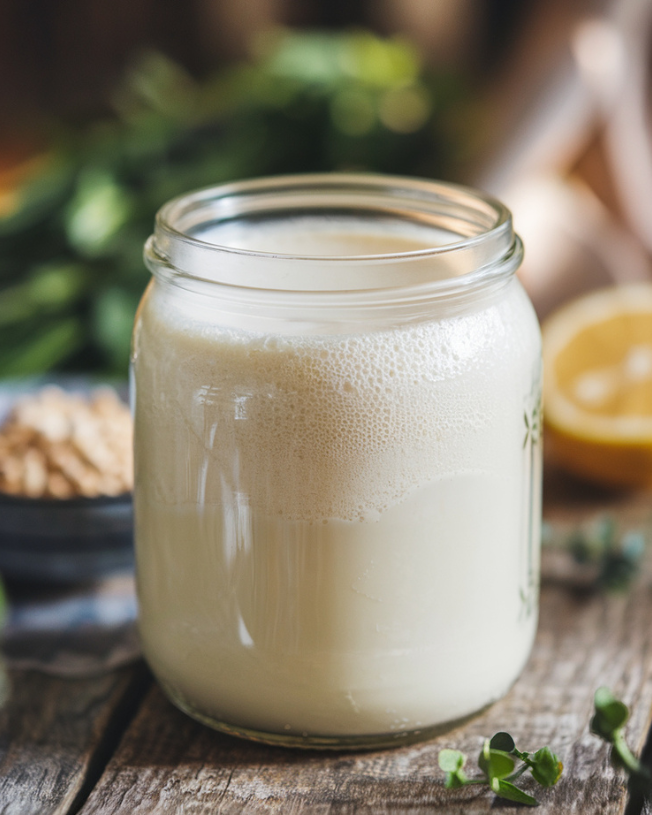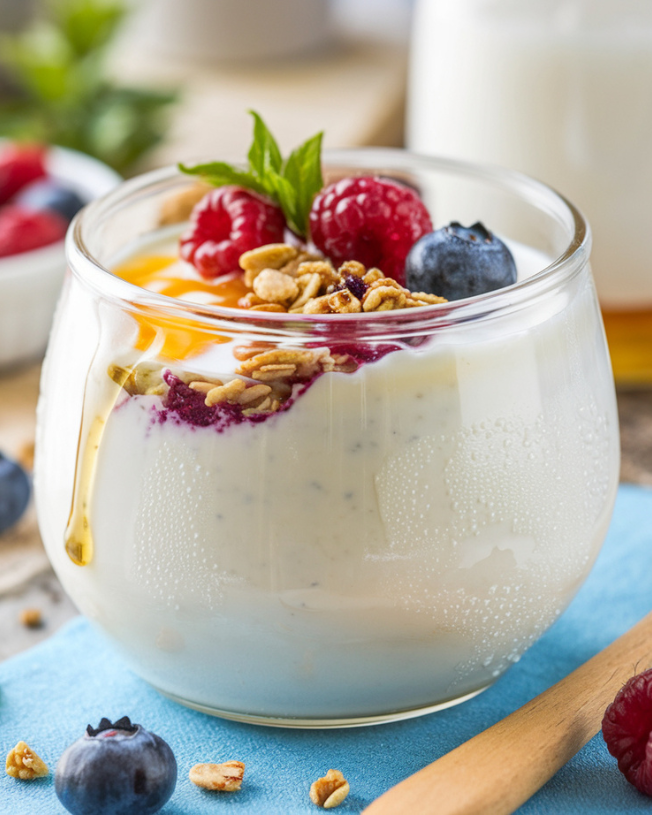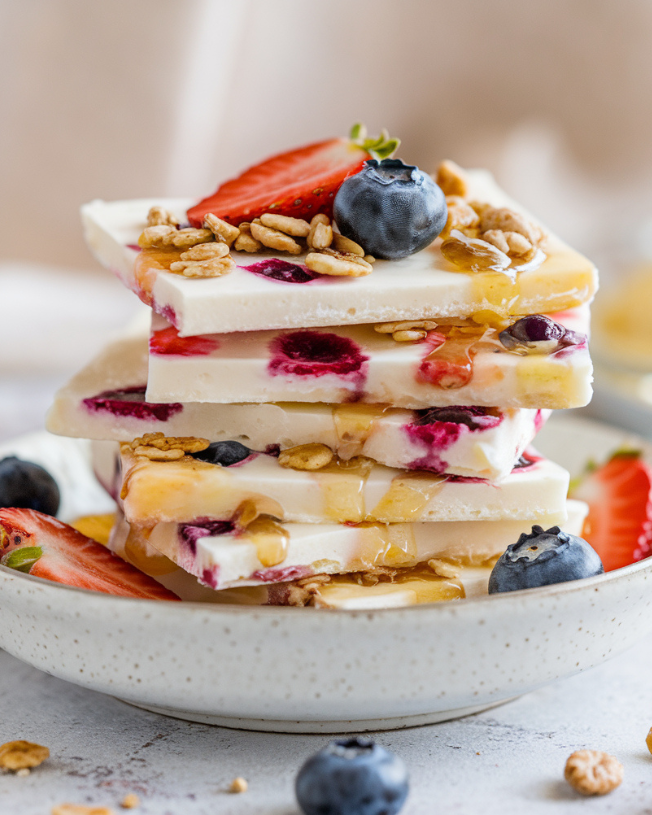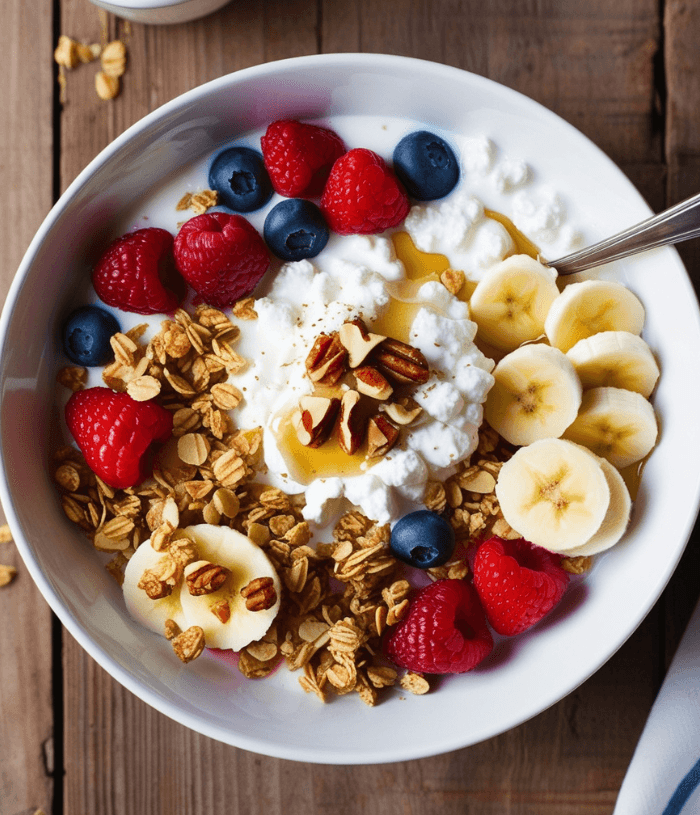Cultured dairy products are not only delicious but also packed with health benefits. From tangy yogurt to creamy cheese, these recipes harness the power of fermentation, introducing beneficial bacteria that can enhance gut health and boost overall wellness. Whether you’re looking to diversify your diet or explore new culinary adventures, incorporating cultured dairy into your meals is a fantastic choice.
Table of Contents
Toggle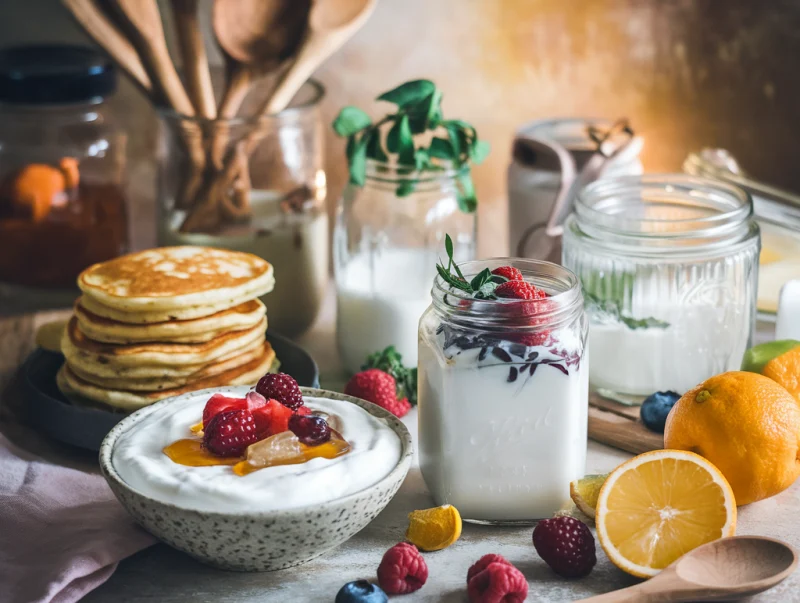
Cultured dairy includes any milk-based product fermented with beneficial bacteria. Through a process of fermentation, milk turns into delicious creations like yogurt, kefir, crème fraîche, and even cultured butter. Not only do these transformations add unique flavors and textures, but they also extend the shelf life and nutritional benefits of dairy products.
What Makes Cultured Dairy Special?
Unlike regular milk, cultured dairy contains live, active bacteria that have numerous benefits for digestion and immune health. The probiotics in these products aid in balancing gut bacteria, making cultured dairy easier to digest than regular milk and often more nutritious. Moreover, these homemade recipes allow you to control ingredients and avoid additives found in store-bought options.
Health Benefits of Fermented Dairy Products
Cultured dairy provides benefits beyond traditional dairy. By incorporating probiotics, vitamins, and minerals, fermented dairy products can positively impact your overall well-being.
Improved Digestive Health
Cultured dairy products are rich in probiotics that support gut health. Probiotics help balance the gut microbiome, improving digestion and absorption of essential nutrients. For those with lactose intolerance, cultured dairy can be easier on the stomach since the fermentation process breaks down much of the lactose.
Boosted Immune System
Consuming probiotics regularly has been shown to strengthen the immune system. The live bacteria in cultured dairy products help fight off harmful pathogens, giving your immune system extra support to guard against illness.
Enhanced Nutrient Absorption
Fermentation boosts the bioavailability of vitamins and minerals. Nutrients like calcium, B vitamins, and potassium become easier for the body to absorb, adding to the dietary benefits of cultured dairy.
Essential Equipment and Ingredients
To make cultured dairy at home, gather a few key tools and ingredients. This simple setup allows you to prepare these probiotic-rich foods with ease.
- Glass jars: Ideal for fermenting and storing.
- Cheesecloth or breathable covers: For covering jars and allowing airflow.
- Thermometer: Helps monitor temperature, essential in culturing dairy properly.
- Milk: Use full-fat milk for a creamier texture, though any milk will work.
- Cultures or starter: Yogurt with live cultures, kefir grains, or other starters are needed to kickstart the fermentation process.
Cultured Dairy Recipes
Here are some staple cultured dairy recipes you can make at home. Each recipe brings a unique flavor and texture to the table, so you can enjoy the benefits of homemade fermented foods in different ways.
Homemade Yogurt
Homemade yogurt is creamy and tangy, with a versatility that makes it perfect for breakfast, desserts, or smoothies. Making yogurt at home allows you to control the thickness and taste.
Ingredients:
- 1 quart of milk
- 2 tablespoons of plain yogurt containing live cultures
Instructions:
- Heat the milk in a saucepan over medium heat until it reaches 180°F (82°C). This kills any bacteria and prepares it for culturing.
- Let the milk cool to about 110°F (43°C), then stir in the yogurt.
- Pour the mixture into a clean jar, cover with a breathable cloth, and place it in a warm spot for 6-12 hours. A longer fermentation time will create a tangier taste.
- Refrigerate the yogurt, which will keep for up to two weeks.
Kefir: The Probiotic Powerhouse
Kefir is a fermented drink that’s even richer in probiotics than yogurt. It has a tart, tangy taste, making it a refreshing and nutrient-dense drink.
Ingredients:
- 2 cups of milk
- 1 tablespoon of kefir grains
Instructions:
- In a glass jar, combine the milk and kefir grains.
- Cover with a cloth, secure with a rubber band, and leave at room temperature for 24 hours.
- Strain out the grains and refrigerate your kefir. Use the grains for new batches. Kefir will last up to a week in the fridge.
Cultured Butter
Cultured butter has a rich, tangy flavor that elevates any recipe, and it’s effortless to make.
Ingredients:
- 2 cups of heavy cream
- 1 tablespoon of buttermilk or yogurt
Instructions:
- Mix the cream and buttermilk in a jar and cover with a cloth.
- Let it sit in a warm place for 12-24 hours until it thickens.
- Whisk or blend until the butter separates from the buttermilk.
- Rinse, shape, and refrigerate the butter, which will keep for up to two weeks.
Crème Fraîche
Crème fraîche is a luxurious, mildly tangy cream that’s perfect for sauces, soups, and desserts.
Ingredients:
- 1 cup of heavy cream
- 2 tablespoons of buttermilk
Instructions:
- Mix the cream and buttermilk in a jar.
- Cover and leave at room temperature for 12-24 hours until thickening.
- Refrigerate for up to two weeks.
Troubleshooting Common Issues
As you explore cultured dairy recipes, you may encounter a few challenges. Here are solutions to common issues:
- Runny or Grainy Yogurt: If your yogurt isn’t setting, it might be due to low temperatures. Ensure the milk is at the right temperature before adding cultures.
- Kefir Not Thickening: If kefir remains too thin, the grains might need more time or warmth to culture fully.
- Cultured Butter Not Separating: Insufficient culturing time or low temperature can prevent separation.
Creative Ways to Use Cultured Dairy
Cultured dairy products can be incorporated into various meals, adding both flavor and health benefits. Here are some delicious ways to enjoy them:
Flavor Variations and Additions
Adding flavors to cultured dairy can make them even more enjoyable. Try:
- Fruit and Honey Infusions: Stir in pureed berries, honey, or maple syrup for a naturally sweet touch.
- Herbs and Spices: Add fresh herbs, garlic, or cinnamon to enhance flavors for different culinary applications.
- Nuts and Granola: Mix in nuts or granola for added crunch and nutrition.
Storing and Preserving Cultured Dairy
Most cultured dairy products will last for about two weeks in the refrigerator. Always use clean utensils to avoid contamination. You can also freeze yogurt or kefir to preserve them for longer periods.
Incorporating Cultured Dairy into Your Diet
There are endless ways to enjoy cultured dairy daily. Here are a few popular methods:
Smoothies and Breakfast Bowls
Add kefir or yogurt to smoothies for creaminess or layer them in breakfast bowls with fruits, nuts, and seeds.
Dips and Spreads
Use crème fraîche or yogurt as the base for savory dips. Add garlic, herbs, or spices to make a Mediterranean-inspired dip or a zesty spread for sandwiches.
Baking with Cultured Dairy
Cultured butter and crème fraîche bring richness and depth to baked goods. Substitute them for regular butter or cream in your recipes to add a unique tang and texture.
Conclusion
Cultured dairy recipes offer a delightful combination of flavor, texture, and health benefits. From yogurt and kefir to crème fraîche, you can easily create these delicious, nutrient-rich products at home. Incorporating cultured dairy into your diet adds probiotics and unique flavors that elevate everyday meals. Start your cultured dairy adventure today and enjoy the rewards of homemade, probiotic-rich foods!
Cultured Dairy Recipes:
Incorporating cultured dairy products into your diet is a simple and delicious way to promote gut health, improve digestion, and add valuable nutrients to your meals. Whether you prefer yogurt, kefir, or buttermilk, these recipes offer a great starting point for enjoying the benefits of cultured dairy at home.

